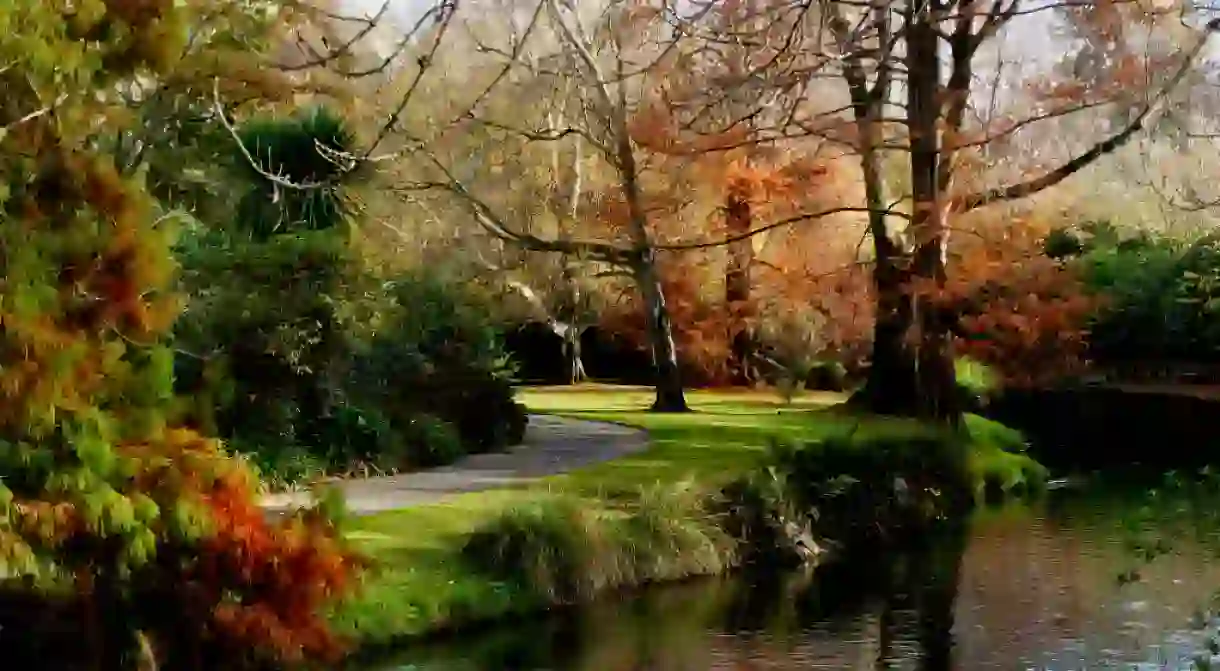12 Amazing Reasons to Visit Christchurch, New Zealand

Christchurch is a resilient city that continues to show that creativity will get you through the hard times. Since the devastating 2011 earthquake, ongoing reconstruction efforts have solidified the city’s place as one of New Zealand’s best travel destinations. To prove this point, here are 12 attractions that should give you enough reason to visit Christchurch at least once.
World-famous street art
Lonely Planet’s 2017 Street Art Book ranks Christchurch among the crème de la crème of street art around the world. It rightly recognises the impact tragedy had on transforming the city into an artistic powerhouse – the RISE festival in 2013, which was the first street art festival and exhibition to be hosted in Christchurch, is among the notable examples of how the city used creativity to cope with the damage they were faced with. Suffice to say, a walk around the city is worth it just to admire these revitalising post-quake pieces and the sense of hope they emit.

Quake City
Museum

Garden City (aka Christchurch Botanic Gardens)
Traditional icons
Christchurch brings its European settler past into the present with a handful of classic experiences. The Edwardian-themed punt down the Avon River is a pleasant way to see the city and its lovely parkland. A tram ride around the city and double-decker bus tours are also good options for those who prefer to venture along the roads. All of these will allow you to explore key sights and attractions, taking in the surroundings while you gain an special appreciation for the area’s iconic traditions.

The contemporary Cardboard Cathedral
The Christ Church Cathedral was considered the physical and symbolic heart of the city since its construction in the 19th Century. Alas, the February 2011 earthquake rendered it damaged beyond repair – only a few hymn books were able to be salvaged in the aftermath, and the remains of the cathedral are now locked behind some forlorn fencing. Enter the Cardboard Cathedral, a fixture that was intended to be a temporary replacement to this old-time classic, but has now evolved into something much greater. Designed by Japanese architect Shigeru Ban, the new cathedral relies on 98 cardboard tubes, measuring 28 metres (91.9 feet) in length, covered in polycarbonate sheeting. The Cardboard Cathedral is believed to have a lifespan of 50 years, and is very much a symbol of the city’s resounding faith and endurance.

Christchurch’s Cardboard Cathedral | © Gordon Cheung/Flickr
A gateway to Arthur’s Pass
Anyone who knows a bit about the South Island will able to tell you one thing: It is incredibly scenic. A drive from Christchurch, along the Canterbury Plains, will lead you into the area’s most exquisite natural sights, from the Southern Alps right into Arthur’s Pass National Park. Composed of vast swathes of beech forests on the east and deep river gorges to the west, this alpine reserve is a great spot for soaking up the natural landscapes. Along with being a prime hiking and mountaineering destination, Arthur’s Pass is also renowned for as one of the best places to catch sight of the inquisitive kea.

And a gateway to Antarctica
Interestingly enough, Christchurch International Airport has been host to the United States, New Zealand and Italian Antarctic Programmes for several years. Because of that, the idea of a visitor attraction, showcasing exactly why scientific researchers consider Christchurch ‘the gateway to Antarctica’, naturally came to fruition in the early 1990s. The International Antarctic Centre was subsequently opened in 1992, and is now one of city’s top tourist attractions. The centre’s iconic experiences include penguin encounters, historic displays, and a Hagglund snow-vehicle ride.

The Storm Room at the International Antarctic Centre | © Madeleine Deaton/Flickr
The enduring Christchurch Art Gallery
Art Gallery, Building

The breathtaking Banks Peninsula
A trip to Christchurch and the wider Canterbury region will bring you up close and personal to an array of interesting marine life, including the world’s rarest and smallest dolphin. Just head immediately north of the city into Banks Peninsula to marvel at the coastal vistas and playful critters you’ll encounter along the way, from the endemic white-flippered penguins to the endangered Hector’s dolphin. You can either drive by the bays and beaches, or peruse the vast network of walking trails in the vicinity. If you want to continue exploring your horizons, the towns of Akaroa and Lyttelton are right on your doorstep too.

The classic New Regent Street
Widely regarded as a forerunner to the modern shopping mall, Christchurch’s New Regent Street has become a major attraction and nationally significant heritage site since its construction in the 1930s. A Spanish Mission architectural style is sustained throughout this iconic shopping precinct, which became a fully pedestrianised area (Christchurch Tram notwithstanding) in the 1990s. While earthquake repairs meant parts of the street had to be cordoned off temporarily, this is still a must-visit for those who are interested in learning more about New Zealand’s historic landmarks.

Markets and public spaces galore
Before the quake, Christchurch city centre was the only place you’d find a decent lineup of bars, cafés and entertainment venues. But because downtown was one of the hardest hit earthquake areas, the business of leisure had to take a different life form. Re:Start Mall, which is unfortunately reaching the end of a short-lived era, was a good example of this, creatively transforming shipping containers into colourful foodie and shopping venues for the central-city Cashel Street. Sumner, a beachside suburb which was also strongly affected by the quakes, is now host to a seasonal Sunday market that was especially devised to lift up the community spirit. A good walk around town will expose you to various other creative spaces and new buildings that are livening up city.

And the remarkable Isaac Theatre Royal
Building














